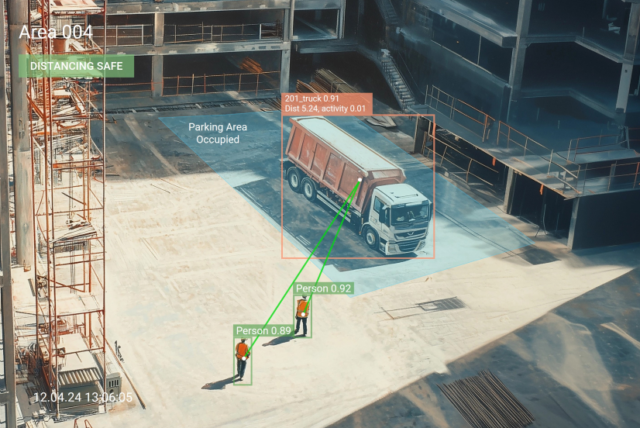In industries where fleets are in constant motion, near-miss incidents are common but often go unnoticed. Whether it’s a delivery truck narrowly avoiding a pedestrian or a forklift coming close to hitting another vehicle, these incidents can be early warnings of safety hazards.
It can be easy to dismiss near misses as minor occurrences, but they serve as critical indicators that, if ignored, could lead to catastrophic outcomes—serious injuries, damage to assets, and significant disruptions to operations.
It is imperative to be aware that the difference between a close call and a disaster is often a matter of timing. The question is: How can you ensure that near misses are detected and prevented before they escalate into more serious incidents?
The power of visual AI for near-miss detection
Traditional safety protocols often rely on manual, reactive methods, such as relying on incident reports from workers or on-site safety officers to spot potential risks. However, this approach has its limitations. Incidents may go unreported, or workers may not feel comfortable reporting them. Even with dedicated safety professionals, there’s only so much that can be monitored manually.
This is where AI computer vision technology transforms the safety landscape. Viso Suite’s near-miss detection solution enables real-time monitoring of vehicle movements. It detects risky interactions, like vehicles veering too close to pedestrians, other vehicles, or obstacles, and automatically flags these incidents as near misses.
Real-time insights and AI-powered analysis give businesses the ability to act fast, before situations escalate.
How it works
Viso Suite uses state-of-the-art computer vision models trained to recognize and assess near misses as they happen. With continuous, 24/7 monitoring of work environments, the system detects and classifies near-miss events with exceptional accuracy.
The technology works by processing video feeds from your existing surveillance cameras. Visual AI models analyze these feeds to identify patterns and behaviors that indicate potential risks. Over time, the software learns from the data, identifying trends, such as frequent near misses in specific areas or behaviors like speeding. Additionally, sensors attached to vehicles can monitor their proximity to other objects and trigger alerts when unsafe distances are detected.

Unlike human observers, AI operates in the background, capturing every near-miss incident without bias or omission. It ensures a consistent, reliable record of workplace activities, allowing safety teams to gain an accurate view of ongoing risks and take proactive steps to prevent accidents.
Benefits of computer vision-based near-miss detection
The value of detecting and acting on near misses is immense, particularly when it comes to reducing risks and ensuring a safer work environment. The benefits of integrating intelligent near-miss detection are far-reaching:
- Reduced incident rates: By continuously monitoring near misses and analyzing risk patterns, businesses can minimize the occurrence of safety incidents and prevent accidents before they happen.
- Increased employee engagement: By putting safety first, employers create a culture of trust and transparency. Employees are more likely to report near misses and feel confident that action will be taken.
- Improved operational efficiency: Reducing downtime caused by accidents and injuries leads to smoother operations. A safer work environment means fewer disruptions, allowing teams to focus on their tasks and be more productive.
Overcoming challenges
While the potential of intelligent near-miss detection is clear, some businesses may hesitate due to concerns about cost or compatibility with existing systems. However, it’s important to view these systems as long-term investments.